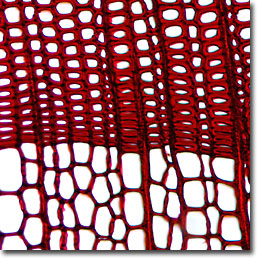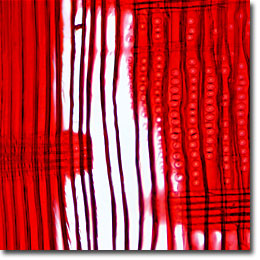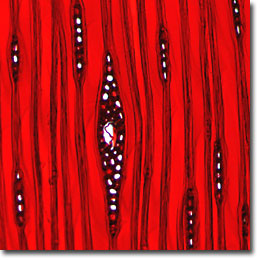The Sitka Spruce
The Sitka Spruce (Picea Sitchensis) is a softwood tree primarily found along the Pacific coast from northern California through southeastern Alaska. Sitka spruce has the highest timber yields due to the rapid growth of its canopy, and that contributes to the tree's high commercial value. The sapwood is creamy white to yellow in color, making a slow grade into the darker heartwood.

Cross Section

Radial Section

Tangential Section
Spruce trees are famous for their majestic appearance as huge needle-leaf evergreens of tremendous horticultural significance. These trees are widely utilized in the timber industry and are an important ingredient in paper pulp. Over 40 species have been cataloged, all residing in the northern hemisphere, generally in cool, moist regions. The versatility of spruce trees is manifested in the fact that their morphology ranges from small shrubs to forest-laden giants. Spruce trees have a dense growth habit, which makes them an excellent choice for protective plantings such as hedges and windbreaks.
The Sitka spruce is distinct from White, Red, Black, and Englemann spruce trees in both color and texture. The tree is often confused with the eastern white pine because of its dark-colored heartwood and large resin canals. Sitka spruce trees are farmed extensively for their high grade lumber which is useful for boxes, crates, pallets, general construction, mill products, laminated beams, musical instruments, furniture, kitchen cabinets, boats, and railroad car construction. The wood was formerly used extensively for aircraft construction because of its high strength/weight ratio, the availability of clear pieces in large sizes, uniform texture, and freedom from hidden defects.
Microscopic examination of iron-alum hematoxylin and safranin stained thin sections (see the digital images presented above) reveals a gradual transition from spring to summer wood with longitudinal and transverse canals having thick-walled epithelium. Tracheids average betwen 35 and 45 micrometers in diameter and bordered pits occur in a single row, but are sometimes paired on the radial walls. The rays are of two types: uniseriate and fusiform. Resin canals have thick-walled epithelium, occasionally with tylosoids in the heartwood, while the longitudinal canals have a large diameter.